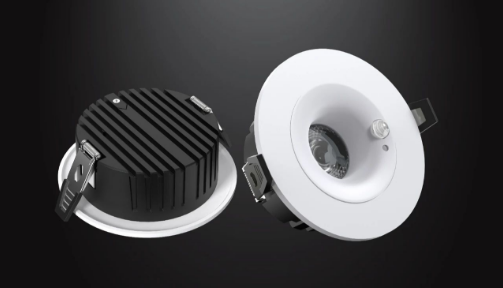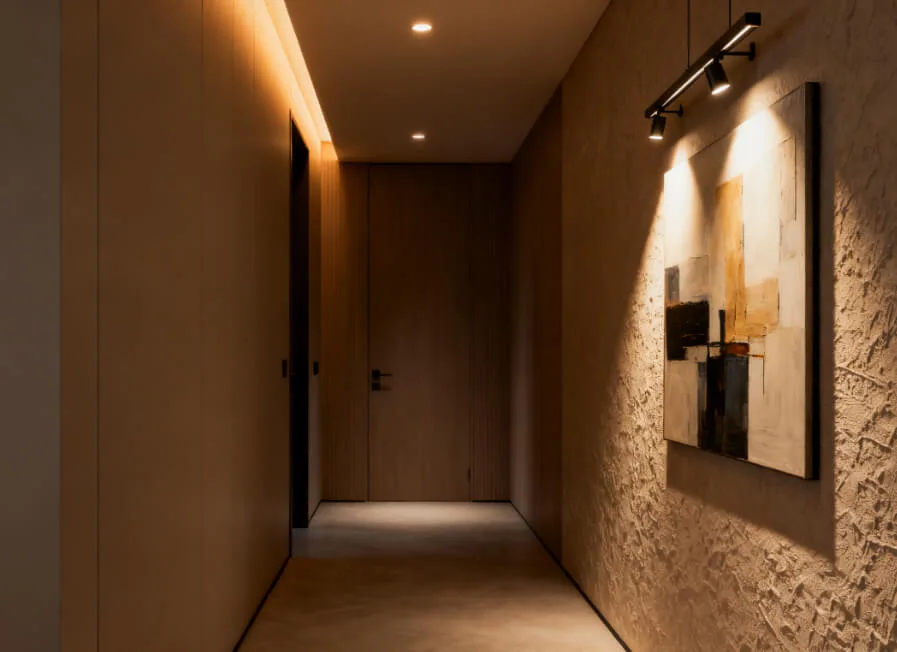
Introduction: The Smart Revolution in Lighting Technology
In modern architectural design and home decoration, motion sensor downlights are increasingly becoming the mainstream choice for lighting systems. These intelligent lighting fixtures integrate motion-sensing technology, enhancing convenience while significantly reducing energy consumption. This article explores the diverse applications of motion sensor downlights, helping you understand how this smart lighting solution can improve quality of life and spatial functionality.
1. How Motion Sensor Downlights Work
The core technology of motion sensor downlights lies in their built-in motion sensors and light-sensitive components. When human movement is detected in low-light conditions, the lights automatically turn on. After a preset period of inactivity or when ambient light is sufficient, they turn off. This intelligent control mechanism makes them a perfect combination of energy efficiency and convenience.
2. Key Application Scenarios
1. Residential Spaces
-
Hallways & Staircases: Automatic lighting at night improves safety
-
Entryways: Lights turn on upon entry, offering a warm welcome
-
Closets & Storage Rooms: Lights activate when doors open, eliminating the need to fumble for switches
-
Children’s Rooms: Soft, automatic lighting for nighttime needs, avoiding harsh glare
2. Commercial Spaces
-
Office Restrooms: Lights turn off when unoccupied, significantly cutting energy waste
-
Mall Emergency Exits: Ensures automatic lighting during emergencies
-
Hotel Corridors: Balances energy savings with guest comfort
-
Warehouses & Parking Lots: On-demand lighting enhances security
3. Public Facilities
-
Hospital Wards & Hallways: Reduces manual operation for medical staff
-
School Buildings: Smart lighting management in common areas
-
Subway Stations & Airports: 24/7 automated lighting solutions
3. Notable Advantages
-
Energy Efficiency: Studies show motion-sensing lighting can reduce electricity consumption by 30-50%
-
Extended Lifespan: Reduced usage prolongs LED lifespan
-
Safety & Convenience: Automatic lighting in dark areas prevents tripping hazards
-
Smart Integration: Seamlessly connects with smart home systems for enhanced living
-
Low Maintenance: High long-term reliability with minimal upkeep
4. Key Factors When Choosing Motion Sensor Downlights
-
Detection Range: Select appropriate sensing angles and distances based on installation height
-
Delay Settings: Adjustable shut-off timers for different scenarios
-
Light Sensitivity: Customizable brightness thresholds for various environments
-
Design Aesthetics: Styles and sizes that match interior decor
-
Protection Rating: Waterproof and dustproof models for damp areas
-
Brand Reputation: Choose reputable brands for guaranteed quality
5. Installation & Maintenance Tips
-
Professional Installation: Hire a certified electrician for safe wiring
-
Regular Cleaning: Keep sensors unobstructed to prevent false triggers
-
Optimal Placement: Avoid positioning near air vents or other sources of accidental activation
-
Function Testing: Thoroughly test all features post-installation
Conclusion: The Future of Smart Lighting
Motion sensor downlights represent a significant shift toward intelligent, energy-efficient lighting technology. With advancements in IoT, future models will be more precise, eco-friendly, and seamlessly integrated with other smart devices. Whether for new projects or renovations, motion sensor downlights offer an efficient, convenient, and sustainable lighting solution worthy of widespread adoption.



